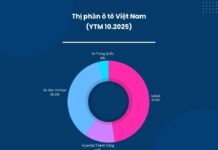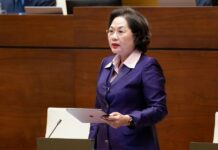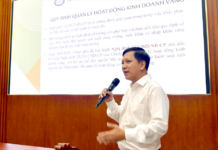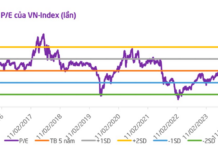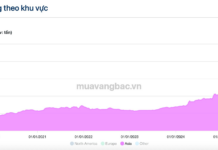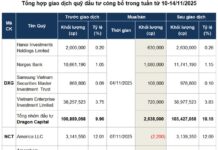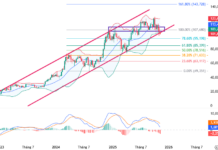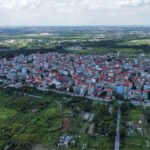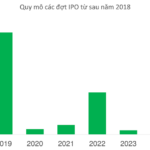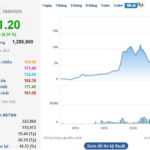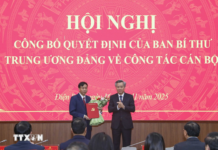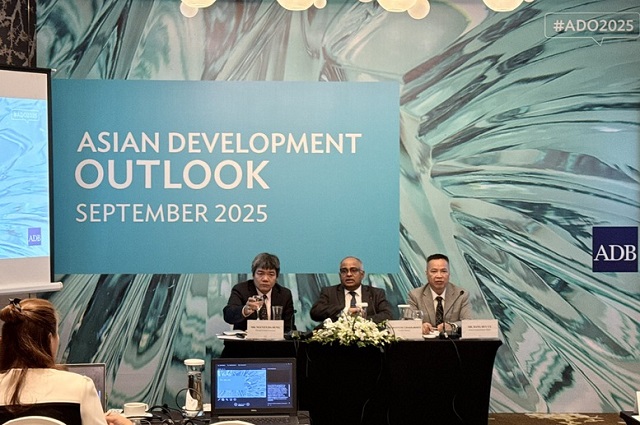
The Asian Development Bank (ADB) has revised Vietnam’s economic growth forecast upward to 6.7% for 2025 but downward to 6.0% for 2026 – Photo: VGP/HT
|
Supportive Policies Boost Growth, Yet Challenges Persist
On September 30, the Asian Development Bank (ADB) released its annual economic publication, featuring updated forecasts for Vietnam.
Accordingly, the growth projection for 2025 has been raised to 6.7%, while the forecast for 2026 has been slightly reduced to 6.0%. Inflation has also been adjusted downward compared to the April forecast, reflecting a more stable trend in global energy and commodity prices.
The report highlights that a surge in exports ahead of new U.S. tariffs, coupled with government support policies, fueled Vietnam’s economic growth in the first half of 2025.
However, this pace is expected to slow in the remaining months due to countervailing duties taking effect from August 7. Nonetheless, the domestic economy remains relatively stable, albeit without the robust growth seen earlier in the year.
Synchronized Fiscal and Monetary Policies
Shantanu Chakraborty, ADB Country Director for Vietnam, emphasized that the reforms in governance, transparency, and tariffs under Resolution 68 are on the right track. The private sector, particularly the “missing middle” segment, will play a pivotal role in creating jobs and enhancing value addition to the economy.
However, Chakraborty noted that Vietnam must focus on climate-resilient infrastructure. Despite significant progress, the country remains among the six most vulnerable nations to climate change, especially in the Mekong Delta. Substantial investment in renewable energy, battery storage, and power transmission is imperative.
Simultaneously, infrastructure development will create a ripple effect, boosting public investment, improving FDI inflows, and enhancing market confidence. ADB, known as the “infrastructure bank,” underscores the need to accelerate this focus.
Therefore, Vietnam must swiftly develop international financial centers in Ho Chi Minh City and Da Nang, while ensuring a favorable legal framework and environment to attract private capital under Resolution 68.
“The emergence of new technology sectors such as semiconductors, AI, and the digital economy demands a highly skilled workforce. The government has announced numerous skill enhancement programs, which must be accompanied by reforms to drive sustainable growth,” the ADB representative stressed.
Global Challenges and the Need for Reform
ADB assesses that Vietnam’s economic outlook for 2025–2026 remains positive, but risks from global instability and domestic factors cannot be overlooked. If major partner economies grow slower than expected or international financial volatility increases, Vietnam will be significantly impacted. Domestically, initial public investment reforms have shown results, but rising financial risks and delays in policy coordination could limit the effectiveness of stimulus measures.
According to ADB, achieving net-zero emissions by 2050 requires massive capital for renewable energy, battery storage, and power transmission systems. Alongside hard infrastructure, education and healthcare—soft infrastructure—must also be prioritized to build a future-ready workforce.
Nguyen Ba Hung, ADB Chief Economist for Vietnam, emphasized the importance of linking Resolution 68 on the private sector with other resolutions, such as Resolution 57 on science and technology. He believes that developing science and technology is crucial for enhancing the competitiveness of Vietnamese enterprises.
The ADB Chief Economist analyzed: Currently, domestic enterprises contribute only 25–30% of total exports, while the FDI sector accounts for over 70%. This presents significant room for private sector growth. While policies are on the right track, comprehensive reforms are needed to improve the business environment, enabling enterprises to invest in science and technology and enhance competitiveness.
Responding to media queries on policy coordination, the ADB expert noted that current interest rates are appropriate, with limited room for further easing. The refinancing rate of 4.5% compared to inflation of 3.3% indicates a balanced monetary policy. The State Bank’s liquidity management through open market operations is deemed suitable for credit demand.
Regarding exchange rates, the policy of maintaining a 5% fluctuation band around the central rate continues to control volatility. The slight depreciation of the Vietnamese dong against the USD supports export competitiveness but increases import costs. However, given the global downward trend in commodity prices, import inflation pressure remains insignificant.
Experts also stressed that ensuring policy objectives requires comprehensive coordination among ministries, agencies, and local governments. This coordination will determine the effectiveness of fiscal and monetary measures, avoiding the risk of asset bubbles from rapid short-term credit growth.
ADB has also revised downward its growth forecast for the Asia-Pacific region, amid a global trade environment reshaped by tariffs and new agreements. Albert Park, ADB Chief Economist, remarked: Growth in developing Asia remains supported by exports and domestic demand, but the external environment is increasingly challenging. Governments must continue to maintain sound macroeconomic management, openness, and deeper integration.
ADB affirms its commitment, as a leading multilateral development bank, to continue partnering with member countries, including Vietnam, to promote inclusive, sustainable, and resilient growth. Established in 1966, ADB currently has 69 members, with 50 from the Asia-Pacific region.
– 11:55 30/09/2025
Revolutionary Proposal to Resolve Land Valuation Challenges
The proposed land price list is meticulously structured based on land type, region, and location. Provincial People’s Councils determine the land price table every five years, with the next update set to be announced and implemented starting January 1, 2026. Revisions and additions will be made as necessary to ensure accuracy and relevance.
Billionaire Pham Nhat Vuong Makes Unprecedented Move in History
The estimated value of Vingroup’s Chairman’s assets on the Vietnamese stock market currently stands at approximately 302 trillion VND.





